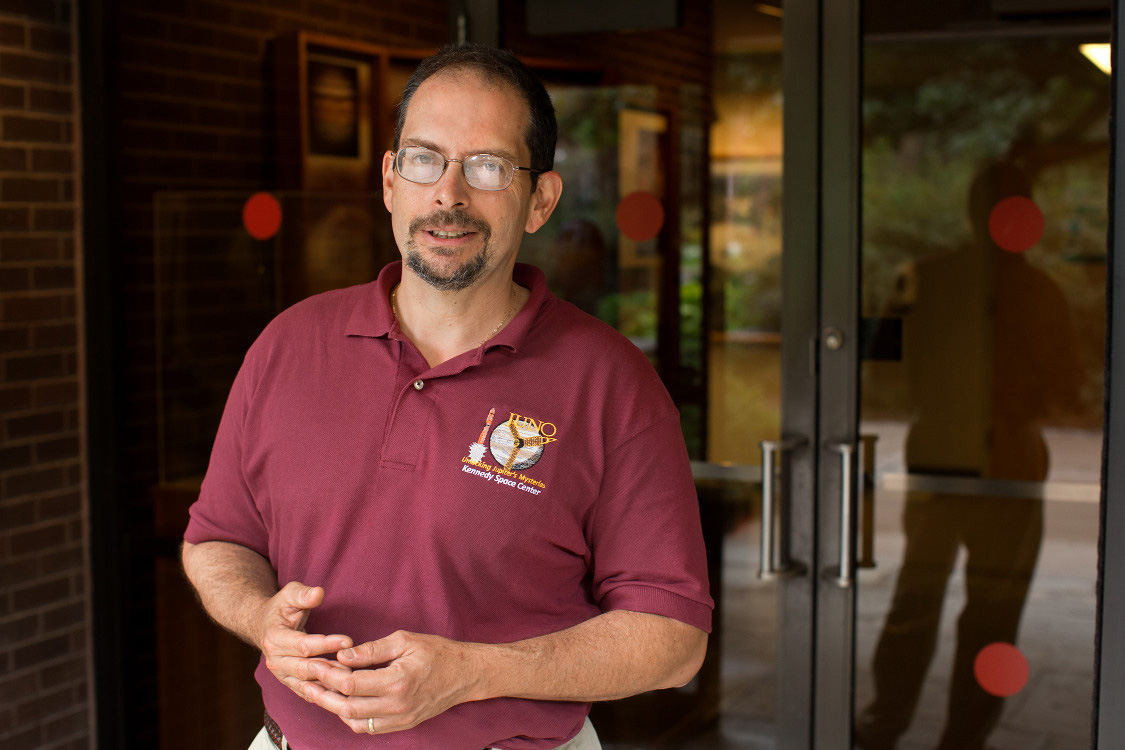Jupiter's mysteries to be revealed starting July 4
By Linda B. Glaser

On July 4, the veil over Jupiter’s mysteries will be ripped away with the arrival of NASA’s Juno mission, and Jonathan Lunine will be there to watch it happen.
Like cosmic archaeologists, astronomers will use Juno’s instruments to understand what went into the icy planetesimals that Jupiter swept up after it formed.
“It’s a unique record for the outer solar system of what these protoplanets might have been like,” says Lunine, the David Duncan Professor in the Physical Sciences in Cornell’s College of Arts and Sciences. “We’re doing the astronomical equivalent of ‘broken pottery’ archaeology, trying to piece back together the original molecules and ice grains that got evaporated and dissociated inside Jupiter billions of years ago.”
For Lunine, who has spent his career trying to understand how the solar system formed, the spacecraft’s arrival at Jupiter is particularly fraught.
“This is really the first mission that’s devoted to understanding the kingpin of the solar system, which played such a huge role in what happened early on in the history of the solar system,” he says. “It’s our first chance to look inside Jupiter with very, very powerful techniques.
“One of the reasons I’m so excited about Juno is that this is a critical step in understanding not just how one solar system formed but how many planetary systems formed,” says Lunine, a member of Cornell’s Carl Sagan Institute. He plans to compare what’s learned about the elemental composition of Jupiter to giant planets around other stars, to aid in understanding whether they formed the same way as Jupiter.
As a co-investigator on Juno, Lunine is attached to a working group rather than a specific scientific instrument; Lunine “floats” between several instruments. One is the microwave radiometer (MWR), designed to use radio wavelengths to achieve what the Galileo probe was unable to do 20 years ago: measure the water abundance in Jupiter below the clouds. Knowing this measurement will enable scientists to assess what materials Jupiter absorbed early in the solar system’s life.
Another of the instruments Lunine is interested in is the spacecraft itself, which will be used for a gravity experiment involving the Doppler effect to determine whether Jupiter has a solid core. Juno will swing so close to Jupiter for the measurement that it will be below its massive radiation belts, just a few thousand kilometers above the clouds. Lunine’s interest in the question of Jupiter’s core has a long legacy: His CalTech thesis adviser, David J. Stevenson, did his dissertation research in the 1970s at Cornell under renowned astronomer Edwin Saltpeter, modeling Jupiter to try to determine whether it had a core.
“But you can’t really do it from distant observations,” Lunine says. “You have to get close to Jupiter and measure the gravity field really accurately to tell whether or not deep inside this 300-Earth mass gas giant is a core of 10 or maybe 20 Earth masses of rock and ice material – a ‘Super Earth.’”
NASA’s decision to burn up Cassini in Saturn’s atmosphere in 2017 has Lunine excited, too, because it means Cassini will be able to do the same gravity experiment of Saturn’s core during its close flybys inside the rings. “It will be passing just above the cloud tops like Juno does at Jupiter, underneath the rings of the planet, which will be pretty spectacular,” says Lunine. “The chance to be able to measure the core for both Jupiter and Saturn is really a tremendous opportunity.”
The other instrument Lunine will be working with is the Juno Infrared Auroral Mapper, a near-infrared spectrometer. It will detect water and certain trace gasses in the atmosphere to help determine its composition and will complement the other two instruments on which Lunine will be working.
Lunine was one of the writers of the original proposal that led to the Juno mission, and he vividly recalls where he was when he worked on the text: the Gila National Forest in southwestern New Mexico, with a dramatic night sky spread above him. “The setting was very inspiring, but what we get out of this mission should be even more inspiring,” he says.
Lunine appears in Science Channel’s “Jupiter's Dangerous Secrets” July 5 at 9 p.m. EDT.
Linda B. Glaser is a staff writer for the College of Arts and Sciences.
Media Contact
Get Cornell news delivered right to your inbox.
Subscribe